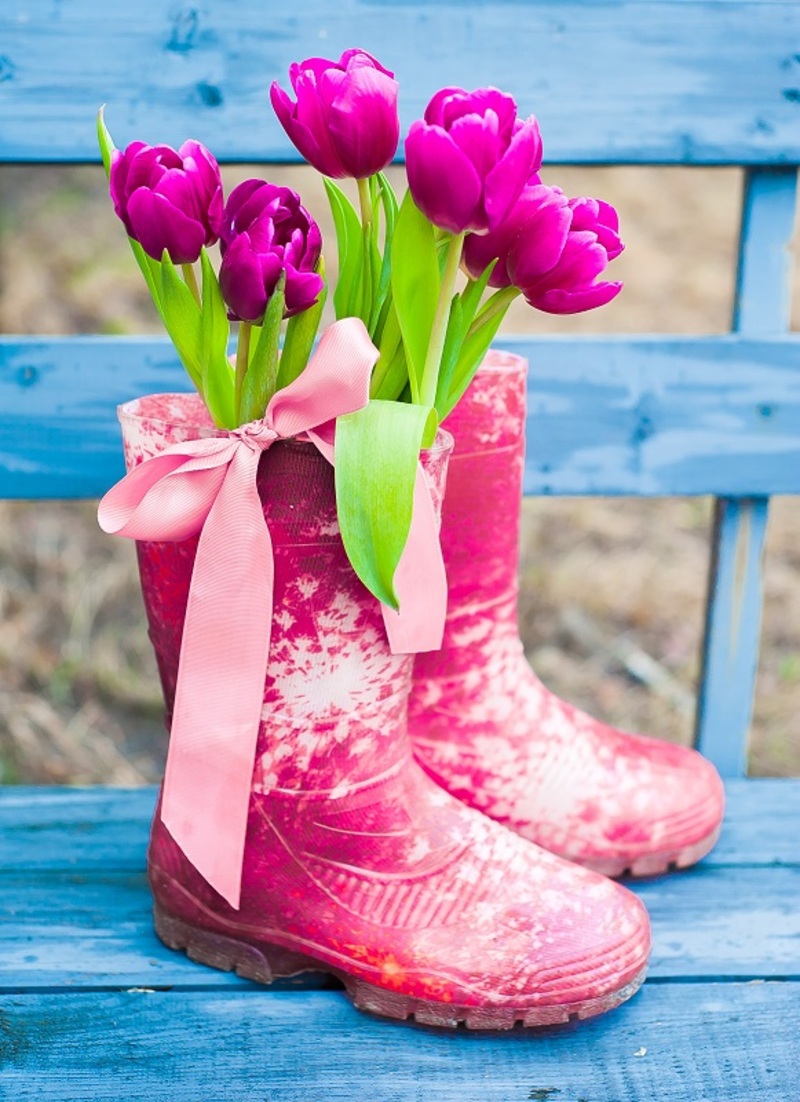Tulips exposed: Seven surprising truths uncovered
Posted on 31/08/2025
Tulips Exposed: Seven Surprising Truths Uncovered
Tulips are celebrated worldwide for their vivid beauty and captivating elegance, but beneath their colorful petals lies a fascinating world of history, culture, and intrigue. In this comprehensive article, we uncover seven surprising truths about tulips that will change the way you view these beloved blooms. Whether you are a passionate gardener, a curious historian, or someone who simply enjoys the allure of these spring favorites, there is much to discover in our expose on tulips.
1. Tulips Originated in Central Asia, Not the Netherlands
When you think of tulips, the first country that likely comes to mind is the Netherlands. However, the true origins of tulips can be traced far eastward to the rugged landscapes of Central Asia. Wild tulips grew abundantly in the foothills of the Tien Shan and Pamir Mountains, spanning parts of Kazakhstan, Uzbekistan, and neighboring regions.
The Fascinating Early Journey of Tulips
- Nomadic tribes were among the first to cherish wild tulips for their hardiness.
- Tulips were cultivated and celebrated in ancient Persia and the Ottoman Empire centuries before their arrival in Europe.
- They became symbols of wealth and status in the imperial gardens of Istanbul as early as the 16th century.
From these humble beginnings, the tulip's journey to the iconic fields of Holland truly took off in the late 1500s, brought westward by traders and botanists who marveled at the flower's diverse hues and forms. Today, the intricate story of how tulips migrated from Asia to Europe remains one of their most compelling aspects.

2. Tulip Mania: The World's First Financial Bubble
Perhaps the most infamous chapter in the history of tulips is the phenomenon known as Tulip Mania. In the 1630s, the Dutch Golden Age was in full bloom, and the increasing popularity of tulips in the Netherlands sparked a frenzy unlike any before. At the height of this economic spectacle, a single tulip bulb could cost more than a skilled craftsman earned in a year--or even more than a house in Amsterdam.
The Rise and Fall of the Tulip Trade
- The demand for rare and unique tulip varieties created a speculative market where bulb prices skyrocketed.
- Some collectors traded bulbs for land, livestock, and luxury goods.
- By 1637, the market crashed, leaving many speculators in financial ruin.
While modern economists often debate the actual impact and scope of Tulip Mania, there is no denying the powerful hold that tulips once had over both fortune and imagination. This episode remains a cautionary tale about speculation and market bubbles, and it contributed to the lasting mystique of tulips worldwide.
3. Tulips Come in an Astounding Array of Types and Colors
Most people picture tulips in classic red, yellow, or white, yet there are over 3,000 registered varieties of tulips today. These varieties span a sweeping spectrum of colors and forms, from double-petaled 'peony' tulips to uniquely fringed and parrot-like blooms. Hybridization has resulted in tulips displaying nearly every color except true blue.
The Science Behind Tulip Colors
- Tulip color is determined by anthocyanins and flavonols, pigments naturally present in the petals.
- Selective breeding has enabled horticulturists to enhance and mix colors, leading to extraordinary patterns and forms.
- Historically, some of the striking "flamed" or "feathered" tulips were the result of a virus called Tulip Breaking Virus, which altered pigment production and created beautiful, albeit less healthy, flowers.
Whether you prefer the traditional single-flowered tulips or the exotic multi-petal and parrot types, there is a tulip variety for every taste and garden style.
4. Tulips Played a Powerful Role in Art, Literature, and Culture
Tulips have inspired countless artists, poets, and cultural movements across the centuries. Their delicate curves and vibrant hues have become a symbol of fleeting beauty, luxury, and even heartbreak.
Tulips in the Creative World
- Ottoman art was heavily influenced by tulips, which were often depicted in ceramics, textiles, and palatial gardens.
- The Dutch 'Golden Age' painters including Jan Brueghel and Rembrandt featured tulips in their exquisite still-life paintings, underscoring the flower's luxury status.
- In literature, tulips often symbolize perfect love and ephemeral moments, notably in the works of Persian poets like Rumi and Hafiz.
The creative legacy of tulips lives on today, with bouquets and arrangements gracing galleries, runways, and homes around the world.
5. Some Tulip Varieties Are Edible (But Beware!)
It may surprise you to learn that certain tulip petals are actually edible--in fact, during World War II's "Hunger Winter," Dutch families ate tulip bulbs out of necessity. While not a staple food, some tulip petals can be used as a garnish or ingredient in salads and desserts.
Safety First When Consuming Tulips
- Only specific parts of the flower--primarily the petals--may be consumed, and some varieties are more palatable than others.
- Bulbs contain alkaloids that can cause digestive distress and should only be eaten in dire circumstances and with great caution.
- People with allergies to pollen or lilies should avoid consuming tulips, as cross-reactivity may occur.
Though adventurous chefs have experimented with tulip petals for unique culinary creations, it is wise to double-check the safety and variety before taking a taste.
6. Tulips Have Deep Symbolic Meanings Around the World
Beyond their physical allure, tulips possess rich symbolic meanings that differ from place to place. In Persian culture, red tulips represent perfect love, while in the Netherlands, they are an emblem of new beginnings and spring.
Decoding Tulip Colors
- Red tulips: A declaration of passionate love or a heartfelt apology.
- Yellow tulips: Once a symbol of hopeless love, they are now associated with cheerfulness and sunshine.
- White tulips: Purity, forgiveness, and respect.
- Purple tulips: Royalty and admiration.
- Pink tulips: Happiness, confidence, and affection.
Tulips have also become global symbols of friendship, rebirth, and enduring hope, cherished in celebrations from Nowruz (Persian New Year) to International Tulip Festivals held in many countries.
7. Modern Tulip Farming Is a Marvel of Innovation
The modern tulip industry combines agricultural expertise with advanced technology to produce the millions of blooms seen each spring in gardens, parks, and flower shops worldwide.
How Tulips Are Grown on a Massive Scale
- Bulbs are now cultivated in vast fields, with machines aiding in planting, harvesting, and sorting.
- Integrated pest management and sustainable practices have helped reduce the need for pesticides and protect pollinators.
- The Netherlands is still the undisputed leader in tulip bulb exportation, accounting for more than 75% of all global tulip bulb production.
Much of the industry's success comes from the precise timing and care given to each bulb, from storage and temperature regulation to soil enrichment and water management. Thanks to modern innovations, tulips are now more accessible and resilient than ever before.

Tulips Exposed: Frequently Asked Questions (FAQ)
What is the best time to plant tulip bulbs?
For optimal blooms, tulip bulbs should be planted in the fall, about 4-6 weeks before the first hard frost. This allows them to establish roots before the winter chill sets in.
Can tulips survive in warm climates?
Tulips require a "cold period" to flower well. In warmer regions, bulbs can be pre-chilled in a refrigerator for 8-12 weeks before planting to mimic natural winter conditions.
What causes tulip petals to change color or display patterns?
Color changes and patterns, especially "stripes" or "feathers", can happen due to viral infections like the Tulip Breaking Virus. Modern breeding techniques now allow for stable, healthy striped tulips without the risks associated with viral disease.
Conclusion: The Lasting Allure of Tulips Unveiled
The world of tulips is filled with unexpected stories and dazzling complexities. From their ancient origins in Central Asia to their pivotal role in financial history, cultural symbolism, and modern agriculture, tulips have woven themselves into the fabric of human society.
Understanding these seven surprising truths about tulips uncovers just how much there is to appreciate behind their delicate appearance. Next time you see a tulip, remember: beneath those vibrant petals lies a legacy of wonder, beauty, and innovation that continues to grow with each new season.
Embrace the journey of tulips exposed. Plant them, enjoy them, and share their fascinating story with others--because the world of tulips is truly more extraordinary than most ever realize.
Latest Posts
Navigating [AREA] Council Regulations for Outdoor Flower Displays
Curate Your Workspace with Low Effort Greenery
Cut Flower Care: Maximize Their Longevity






